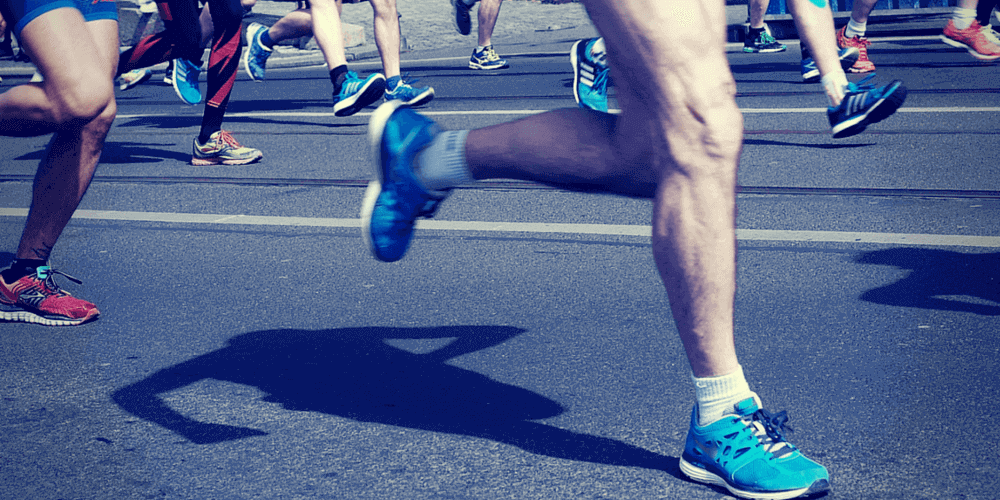The human spine is designed to be somewhat curved, but sometimes it can become so curved that it leaves you looking like an Instagram booty model. When your back curves inwards (which causes your butt to stick out), it’s usually due to something called lumbar lordosis, or hyperlordosis. When it curves the other way and makes your back look flat, that’s hypolordosis. Today, we’re focusing on the former of the two conditions.
For men and women alike, this can cause all sorts of insecurities. It can make clothing fit poorly and look like it’s draped over you which further exaggerates the appearance of lordosis. Beyond vanity, it’s also tied to a number of health concerns that can be much more serious, if left unchecked.
You know what makes it even more difficult? You rarely hear anybody discussing lumbar lordosis. There are so many people out there walking around, living with lumbar lordosis, who don’t even know that there is a name for their condition, not to mention that it can be corrected.
We’re going to help you identify whether or not you have lumbar lordosis, what causes lumbar lordosis, what the negative effects and health risks are, and how to fix it. Finally, we’ll cover some simple yet very effective tips for improving your overall posture in your day to day life.
How Do You Know If You Have It? (Self-Diagnosing Lordosis Posture Issues)
The easiest way to determine if you have lordosis is to simply look at your profile (side view) in the mirror, or take a photo of yourself standing sideways. Stand normally, and try not to compensate or improve your posture for this test. You want to establish a baseline of how you normally look.
You can also perform a number of different posture tests on yourself, for example:
The Door Test: Stand against a wall or a door with your heels, your butt, your shoulders, and your head all touching the door or wall. Palm towards the door, place one of your hands in between your back and the door. Now, do the same with your other hand, placing it on top of the first hand. If you can easily fit both hands between your back and the door, this often signifies an exaggerated curvature which can point towards lordosis.
Laying Down: This is similar to the door test, except you can perform this by laying flat on the ground.
Please keep in mind that these tests won’t necessarily work in every case. Our bodies are not all built to the exact same scale. Some people have larger or smaller hands which can throw off the door test. There’s also a large enough variation in spinal curvature that it’s not always a cut and dry sign of lordosis.
How Doctors Diagnose It
If you’re still on the fence about whether or not you you have lordosis, and you would rather get a professional opinion, you can visit a doctor. Here’s what you can expect:
Physical exam: A doctor will examine your back, and have you perform a few movements. These movements will allow the doctor to determine how flexible your spine is, whether or not the joints in your lower back have fused together (which determines the potential to reverse the condition), the overall alignment of your spine, and other possible contributing factors.
Further tests: In some cases, the doctor may want to see the results of a neurological assessment, for instance if you have any of the following symptoms: “pain, tingling, numbness, muscle spasms or weakness, sensations in the arms or legs or changes in bowel or bladder control.” (source)
X-rays: This will allow the doctor to have a better vantage point of the spine itself and exactly what’s going on. This can also be useful in cases where obesity makes it difficult to see the exact alignment of the spine, and this also allows doctors to track progress over time.
What Causes Lordosis?
There are a number of factors that can contribute to lumbar lordosis, and many of them can work in tandem to further exaggerate this unwanted curvature of the spine.
Bad posture: If you find yourself hunched over very severely, this can cause your spine to try to compensate lower down, which throws everything out of balance. Bad posture is a very common cause of lordosis.
There are very few aspects of modern live that don’t lead us down a path towards poor posture. From commuting to work, to sitting at a desk, to lounging on the couch… for many people, it’s rare for them to ever have a healthy posture for any extended amount of time in their day.
Obesity: Being overweight puts a person at risk for a lot of bad health issues, and one of the less frequently discussed ones is lordosis. Extra stomach fat puts additional pressure on the spine, which creates a situation where the stomach is constantly pulling the spine forward.
Weak abs: Your abdominal muscles are meant to counteract the lower back muscles, kind of like a tug of war. If your abs can’t hold up their end of the bargain, your spine will curve more than it’s supposed to, putting your abs in an even weaker position.
Tight back muscles: The muscles in your lower back can cause an arch in your spine, too. This can occur from sitting too often in an office chair (or on the couch), especially if you’re not getting up and stretching occasionally.
Pelvic tilt: An anterior pelvic tilt (tilting inwards from your back) forces the spine into an awkward position. If your pelvis is not properly aligned, it can pull the rest of your posture out of position.
There are also a number of medical conditions that can contribute to lordosis, such as osteoporosis (a disease that causes bones to become porous), discitis (inflammation in the spine’s discs), achondroplasia (a bone growth disorder resulting in shorter limbs), and more.
When lordosis is caused by weaker muscles, obesity, or poor overall posture, there is a good chance that you can fix it with a number of different exercises, stretches, and techniques that you can perform at home.
Let’s talk about that “Instagram model” look again. Not to be the fun police, but they’re basically just posing to show off voluntary lordosis by curving their backs and sticking out their butts. The look of an exaggerated physique may be beneficial for a model, but it can be kind of embarrassing for everyone else.
Treatment (Stretches & Exercises To Fix Lordosis Posture)
Ignoring lordosis and not taking steps to treat it can lead to worse pain, increased pressure on your spine, and a decrease in mobility.
An encouraging paper from 2014 suggested that stabilization exercises to increase strength in the pelvic posterior tilt muscles can be beneficial in reducing the angle of the tilt by several degrees. The patient in the study also saw an increase in their range of motion, and in certain situations the visual analogue scale of pain dropped from 7 to 4, out of a possible 10. This represents a huge lifestyle improvement.
The following stretches and exercises can be performed throughout the day, when you wake up, and before bed. You can do them several times in a row, taking a short break in between. What’s important here is consistency. You’re not going to rebuild your muscles and correct years of neglected posture overnight, so stick with it.
Stretches for Lordosis
Lower Back Stretch
This muscle helps to stretch out your lower back muscles, along with other muscles in the area that can contribute to lordosis from poor posture.
- Lay down on a flat surface, facing upwards.
- Bring your knees towards your chest, as if you’re in the fetal position.
- You’re essentially trying to pull your knees in towards your back.
- Pull your knees is as much as you comfortably can before experiencing pain.
- Hold this position for 25 seconds.
You should be able to feel your lower back flattening against the floor, and not have any room to put a hand in between your back and the ground anymore.
Hip Flexor Stretch
This exercise works to stretch and loosen the iliopsoas muscles. When these muscles are shortened due to tightness, they pull your spine out of position.
- Start by kneeling down to the floor, with both knees on the ground and both feet behind you.
- Bring one leg in front of you, and bend that knee at a 90 degree angle.
- Start to push your hips forward, keeping your back straight, until the angle in your front knee starts to decrease.
- Once you hit a good stretch, hold that position for 15-30 seconds.
- Switch positions of both of your legs, and perform the same stretch with the opposite leg in front this time.
Another basic stretch for the hip flexor is to simply stand on your left leg, while holding your right leg behind your back by the ankle with your right hand. After 15-30 seconds, switch legs.
Exercises for Lordosis
Crunches
Abdominal and oblique crunches are helpful exercises to strengthen your core muscle group and to help improve your lordosis.
Abdominal: Lay flat on your back with your hands behind the back of your head (or on your chest) and your knees bent. Use your abdominal muscles to raise your head off of the ground, putting your torso at a 30 degree angle. Don’t use your arms to pull or push yourself up (they’re just there to support your neck), make sure you’re activating your abs.
Oblique: An oblique crunch is performed the same, except you’ll rotate your torso slightly in order to engage your oblique muscles. You can alternate back and forth with each rep. Imagine that you’re trying to point each shoulder towards the knee on the opposite side.
The Bridge
- Lay on your back with your knees bent and your feet flat on the floor.
- Lift your your back and your buttocks upwards, towards the ceiling.
- Try to make a straight line from your upper back all the way to your knees.
- Hold this position for 10-20 seconds.
- You can repeat this several times, and increase the length as your strength increases.
If you aren’t able to perform every one of these exercises at the start, that’s okay, begin with what you can do. It’s not about forcing yourself or pushing through pain, you need to do these casually, especially at first while you learn the proper form. Always take it slow and make sure you’re in control of your movements.
Breathing Technique for Lordosis
You might be surprised to learn how closely related your posture and your breathing are. While working on breathing techniques isn’t going to be the most effective way to fix lordosis (compared to stretches and posture and weight loss), it can certainly play a role, and on the other side of the coin, fixing your lordosis can have a big impact on your breathing.
- Start by laying flat on the floor.
- Tilt your pelvis slightly to reduce the gap between your lower back and the floor as much as you can.
- Make sure the soles of your feet are flat on the floor, and your knees are slightly bent.
- Take a very deep breath in your nose, and slowly exhale through your mouth, and repeat this process.
- While this is happening, pay attention to how your body moves and reacts. While exhaling, do you notice having an easier time keeping your lower back aligned with the ground as you completely exhale?
- Have an awareness of your core, and try to tighten your core muscles as you continue breathing.
Now that you’ve experienced how your breathing can impact your posture and alignment, keep this is mind throughout your day. You don’t have to be laying flat to perform this breathing exercise, it just helps to demonstrate the impact it can have.
General Posture Tips (While Sitting and Standing)
In addition to the exercises and stretches outlined above, you should take steps to improve your general overall posture. Doing your exercises and stretches isn’t going to be enough to fix the problem if you don’t address the cause of it, and if the cause is poor posture, then you need to fix that.
How to Sit Properly
If you spend any noteworthy amount of time sitting at a desk (or anywhere else, for that matter), and you aren’t actively paying attention to your posture, there’s a good chance that you’ve got some work to do. Here are some common (and easy to fix) posture problems when it comes to sitting:
Slouching: Leaning backwards in your chair, or slouching over to either side, or leaning forwards, or simply not having your chair at the correct height can all cause compounding issues to your posture, your spine, and can amplify issues with lordosis. If you feel like you need to slouch to be comfortable for longer periods of time, take more breaks, stand up, stretch, do a couple of your lordosis exercises, and then get back to your seat with a refreshed and improved posture.
Poking Out Your Chin: If you find that your chin pokes out in front of you while you’re sitting at a computer screen, your monitor might be too high, so check if you can lower it, or raise your chair up a bit higher. Try to consciously tuck in your chin after making the appropriate adjustments, try to keep your shoulder blades down, and pull in your abdominal muscles. This posture issue in your neck can work its way all the way down your spine to your lower back, and as we’ve discussed, that’s a key contributor to lordosis.
Phone Neck: Originally, this referred to the position your head and spine are in when you’re holding a telephone between your ear and your shoulder. It’s an unnatural alignment for your spine, especially for longer phone conversations. Nowadays, it can also refer to the hunched-forward posture of someone who is always bent over and looking at their cell phone. In either case, be mindful of the position of your neck whether you’re speaking on your phone, or using it for any of the thousands of other things we use our phones for these days.
Standing Posture Advice
It’s not just sitting that can take a toll on your posture. How’s your posture while you’re standing? It sounds weird to have somebody telling you how to sit and stand correctly, we totally understand that, but it’s so easy to slip into bad posture and you should give yourself props for being here, looking to correct it.
The old cliché of keeping your back straight, chin up, and shoulders back is pretty close to ideal. You don’t necessarily want your back to be so straight that it’s flat, but if you’re aiming to reverse lordosis, making a point to stand up straight is a good start. The gist of this is that you don’t want to be leaning to either side, forwards, or backwards. Imagine there’s a helium balloon attached to your head, pulling it straight up.
Stand with your knees straight, but don’t lock them. If you need to stand for an extended period, you can rock back and forth slightly to alleviate some of the pressure, but try to avoid leaning to either side for extended periods. Also, you can get into the walk-stand position, where you have one foot in front of the other as if you’re taking steps, but you’re standing in place.
Final Thoughts
It can take a lifetime of improper posture to develop conditions like lordosis, so you need to remember that it’s going to take a while to reverse the damage. It’s going to be uncomfortable while you have to learn new ways to sit and stand that you aren’t used to, it can be tedious to keep doing these exercises and not noticing quick results, and it can be really easy to slip back into old habits.
This isn’t to discourage you, it’s to prepare you for the challenge ahead, and to remind you that it’s worthwhile. Whether you’re uncomfortable and in pain, or just insecure about your lordosis and how it makes you look, addressing it is something to be proud of.






